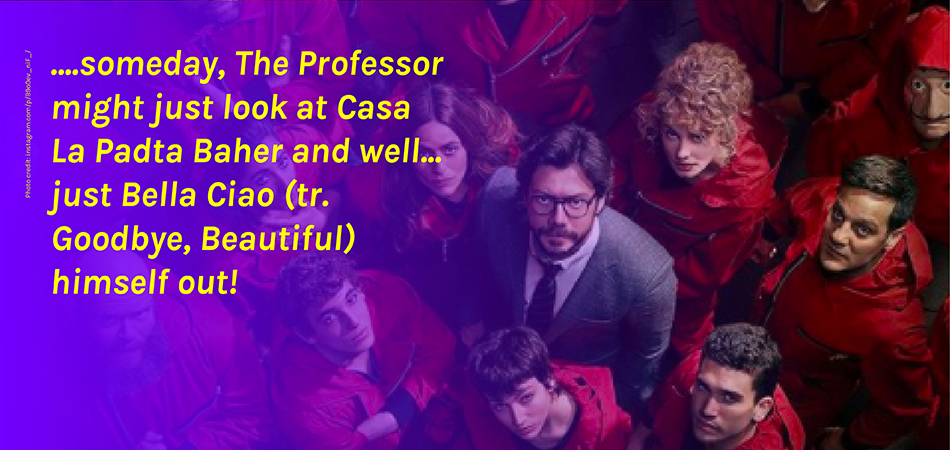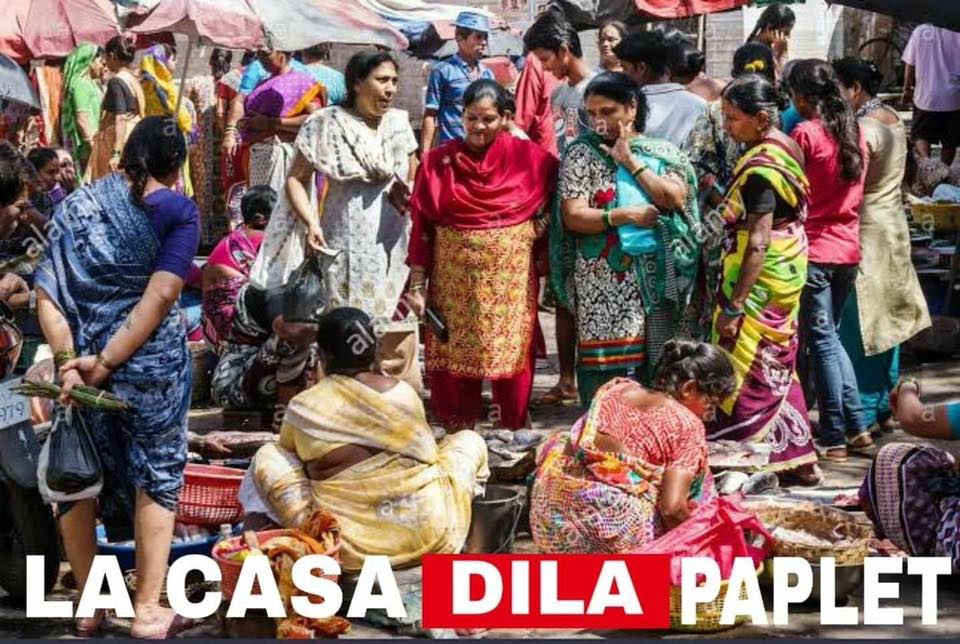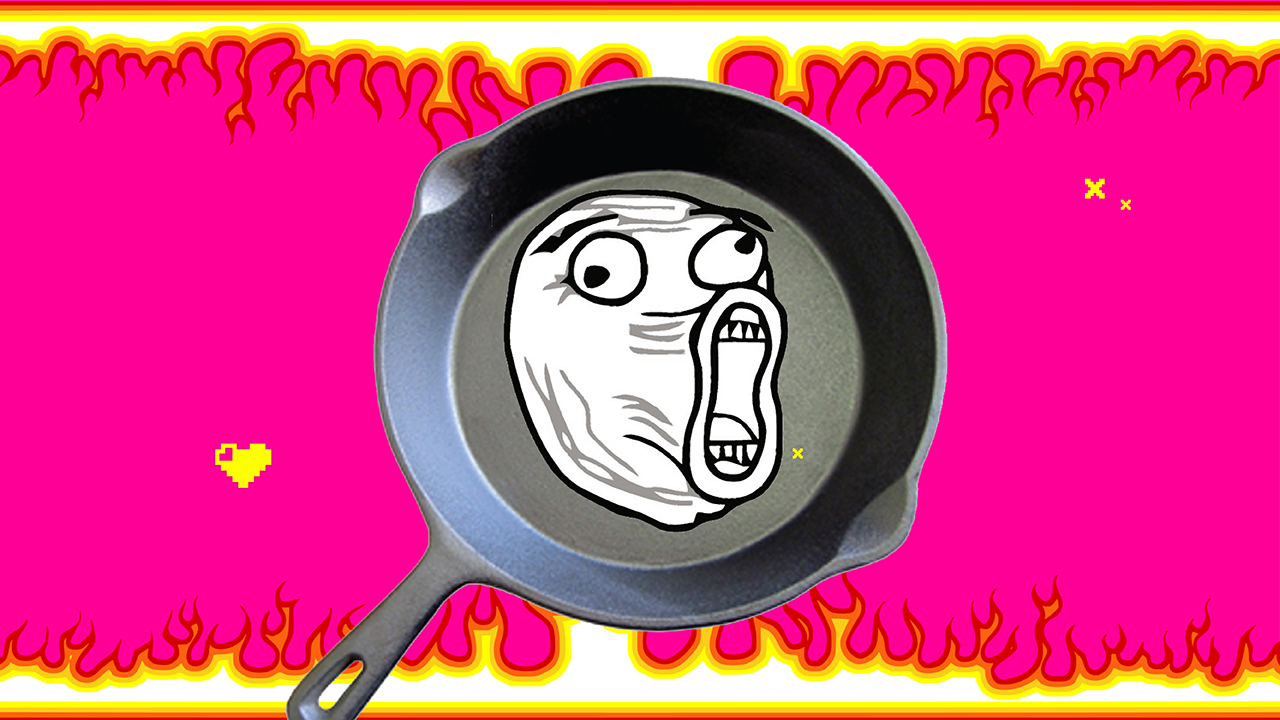by Laxmi Krishnan

Memes are an essential entity woven into the fabric of our digital being. As a netizen, there are newer ethics and codes that we learn for a peaceful co-existence on the interwebs and when it comes to memes, it’s a terrain tread on by many, but not decoded by all. Of all the conventions that tie this unbeknownst space together, one of the most debated threads is the language of the interwebs. Words do not just merely come into being in this medium, they are defined by the user and redefined by the recipient and characteristics specific to their ideas of language. It also provides a plane for challenging or subverting pre-existing notions of spoken/written language, breaking through the rigidity of the linguistic rules, and incorporating these deviations into parlance specific to certain mediums, groups, trends, or shared algorithms – often labeled as Internet Speak. Of all elements that drive and sustain this speak, memes most definitely take a lead. But what is this “speak”, this language of memes?
The first step towards understanding the language of memes is to understand the plurality of the form, the fact that it is a process of coding, decoding, and recoding into imitation, and therefore sustenance, it doesn’t have “a” or “the” language. As a unit of culture, memes are not bound by the constructs of borders and boundaries and therefore modify themselves into relevance transcending all barriers, including linguistic. To understand the bare bone structures of how a language exists in memes, one generally looks at it on the following levels – visual, and verbal. For instance, when you look at a classic “dog meme”, you remember a rainbow/colour wheel background, and the face of a dog at the center of the wheel with some “Impact”ful text lathered on it, using Impact font. But the meme exists on another plane that keeps redefining itself, and therefore furthering the contagion – contextual. A meme sans context doesn’t transmit and in a memetic culture, what doesn’t transmit, ultimately ceases to exist. In the case of the classical dog meme, what the dog “says” which is basically what the creator of the meme intends is treated as “advice”. Albeit significant triggers, the text and the image come together in a certain context and birth another to completely create or replicate a meme and form what is generally perceived as a meme template. The context at times is also cultural, its language borrowed from the culture it originates in and then tweaked and imitated. Every meme creates/recreates a certain framework to be furthered as the memetic element – the key to understanding, replicating, and categorizing the meme. But the idea of a language of memes does not reside only in these templates.
Language, as we perceive, is loaded with certain markers that are unique to a particular linguistic system, and therefore not everyone understands every language that exists. Memes, however, have the potential to be recreated in a way that they can belong in different cultures, with different meanings and inferences, but still participate in forming a larger, translingual memetic culture. For instance, look at this meme:
This meme belongs to the Indian edition of the memetic culture that exists around the renowned show La Casa de Papel aka Money Heist on Netflix. This image originally comes together as a combination of two core elements:
The mask and the type font of the text form develop what is the visual and verbal language of the poster for the show. The meme mentioned above, retains the masks and outfit immediately significant to La Casa de Papel (Money Heist) and retains the font but changes what it is says from La Casa de Papel to “Casa La Padta Baher”. The contextual language, therefore, changes on multiple levels. Firstly, the show this image is taken from is in Spanish, republished in translation with options of viewing in Spanish as well as English. La Casa de Papel literally translates to The House of Money in English and the mask – which is modeled upon Salvador Dali, an iconic Spanish iconoclast – becomes a powerful visual that is inexplicably tied to the text. In the meme by Mumbai Police, La Casa de Papel is changed into “Casa La Padta Baher” which is a Marathi phrase that roughly translates to “Why do you step outside?”, written with regards to social distancing norms during the COVID-19 Pandemic. The Police use this meme as an ode to the show which is trending and jump on the bandwagon by tweaking the existing meanings around La Casa de Papel to create a new one, taking it from Spanish to Marathi and driving their message home, which is not directly related to the show. The word “La” highlighted here in the meme exists phonetically in Marathi too, in Spanish, it means the definitive “The” whereas, in Marathi, it functions as a suffix, which weirdly becomes a merging point between the two languages at work in this meme. Another deviation lies in the fact that La Casa de Papel is a show that is heavily anti-establishment but here is used by a disciplining institution to dole out an instruction for its people to follow. The context of it, therefore, evolves into something almost out of context but this meme belongs in the larger memetic culture around La Casa de Papel, tied together by two key elements – the Dali mask and the type font in use with the red background to the “la” – the operatives making it “that widely shared Money Heist meme.” More honorable mentions in this memetic culture go to memes that were inspired by this Marathi version of La Casa de Papel like this one:

Or this one:
An inference that one can most definitely draw is that language doesn’t function in memes as it does in day to day lives. The true language in memes, therefore, exists not in its being but in its translation. The operative element that gets translated is what becomes the core function of the meme, the “language” of the meme, which is used by individuals or groups attempting to communicate with or contribute to a specific memetic culture. This element or a group of elements form the core of a culture around which the deviations revolve, and this core has a certain message that is adapted into newer meanings. Even when I debate that the language of a meme exists not in the linguistic understandings but in its translation and that there is one message at the crux which can either be Visual, Verbal, or Contextual; Memes do actively affect the linguistic ideals of a language that exist in a society where memes redefine cultures.
The language employed in memes is not only rooted culturally but at times tries to subvert the culture it originates from. It attempts to situate itself in a place where it debunks the normative and the first way in which that is achieved is by playing with the language of memes.
For instance, this meme:
The “stonks meme” – a play on the word Stocks with a meme image of a suited businessman- is not a solitary unit. Alongside it exists a whole culture of picking up words and the words for professions in the English Language are distorted into words that resemble the original but phonetically challenge the speak of the word in use. (un)surprisingly, this language is not accessible sans context and therefore thrives only in the culture where the semantics of this distortion is established, in a way institutionalizing itself for legitimacy. What cannot be decoded, cannot be memed and therefore can’t live on to be imitated. These memetic distortions are not limited to just the “stonks meme” but also go on to the spectrum of darker, more inappropriate “dank” memes.
Access to memetic language is further perplexed by one’s privilege to have access to certain discourses from where these memes emerge. Language is not a monolith and meanings are never absolute, and therefore, one’s social location plays a pivotal role in their understanding of memes, memetic language, and belongingness in said cultures. One might understand where the meme originates from or belongs but one might not have the complete access to it – the context key – if it is in a foreign language or from a culture alien to the recipient. The translatability of a meme makes it a meme, makes its visual, verbal, or contextual language universal and it is this virtue that makes memetic cultures universal across borders, including linguistic. But someday, The Professor might just look at Casa La Padta Baher and well… just Bella Ciao (tr. Goodbye, Beautiful) himself out!
References:
Are Internet Memes a New Form of Literature? – Quillette: https://quillette.com/2016/11/28/are-internet-memes-a-new-form-of-literature/
Are Internet Memes a New Form of Literature? – Quillette: https://quillette.com/2016/11/28/are-internet-memes-a-new-form-of-literature/
Technology and Language Change: How Memes and Emojis Are The Language of The 21st Century and That’s OK | PennWIC: https://pennwic.wordpress.com/2016/10/19/technology-and-language-change-how-memes-and-emojis-are-the-language-of-the-21st-century-and-thats-ok/
The Language of Gen Z: Memes | Millennial Marketing: http://www.millennialmarketing.com/2018/07/the-language-of-gen-z-memes/
Understanding the Language of Internet Memes | Psych 256: Cognitive Psychology FA: https://sites.psu.edu/psych256fa15/2015/11/22/understanding-the-language-of-internet-memes/
How memes became the language of the internet revealed in Richard Clay BBC Four film | Metro News: https://metro.co.uk/2019/03/20/lolcats-pepe-frog-memes-became-language-internet-8956420/
Meme Templates as Expressive Repertoires in a Globalizing World: A Cross-Linguistic Study | Journal of Computer-Mediated Communication | Oxford Academic: https://academic.oup.com/jcmc/article/23/5/294/5075540
Susan Blackmore: Memes and “temes” | TED Talk: https://www.ted.com/talks/susan_blackmore_memes_and_temes/transcript
Memes as a love language – Article Group – Medium: https://medium.com/article-group/memes-as-a-love-language-e02246c5c654
Meme and Variation : Language Lounge : Vocabulary.com: https://www.vocabulary.com/articles/ll/meme-and-variation/
Know your meme: internet pop culture is the new language of activism – News and Events | Curtin University, Perth, Western Australia: https://news.curtin.edu.au/stories/know-your-meme-internet-pop-culture-is-the-new-language-of-activism/
What Makes Memes Popular? The Language and Science of Memes | Science and Tech | The Escapist: https://v1.escapistmagazine.com/articles/view/scienceandtech/15155-What-Makes-Memes-Popular-The-Language-and-Science-of-Memes?__cf_chl_jschl_tk__=686242982007a3cc88d3af50936435a95a7b4465-1587489315-0-AUyj3sDBnmG9BLMc3ZVQuKAGA3Kfo-vT-b5MoQEn7oHXBl4YSM-wsQOcxfNOQ5OT5D5cDrT-1zv0rXS6L1z3N3J8MlBC_Sdk_688WWbSReAIC5y5BGg5CG4umKBBAO8vx976VPXWo7JqIPfaxXR3cXWVTI5gM6UnpNvpbTKkXTBjgbAsK2D692o2GLpqwfsSZbPFwvpllXoAGeoxt9bND8pzJ5K3CSx1D0dLO8F73hN0xuESM_bhJ1KY5ZcN9rormMEYwtYAb96JRmUfNRGX083_14jZvQA3Adr4zeyCxwKgOcifA5OfZrpMPtjxo-Ps2ckoJArM6lIOcaP5TTraLvhTGzIFNOfXYUVbO7wfdd9cT1_NzJ7ahlfRjbj85ein3gs81p5GYJHDUIscoH85M9Q
How Cat Memes Became A Language Learning Game: https://www.forbes.com/sites/danieltack/2013/11/20/how-cat-memes-became-a-language-learning-game/#a72b6b648757
Best SpongeBob Squarepants Memes, Explained From Mocking SpongeBob to Surprised Patrick: https://www.esquire.com/entertainment/tv/g28400028/spongebob-squarepants-meme-guide-explained/
Dogs Are Doggos: An Internet Language Built Around Love For The Puppers : All Tech Considered NPR: https://www.npr.org/sections/alltechconsidered/2017/04/23/524514526/dogs-are-doggos-an-internet-language-built-around-love-for-the-puppers
How internet memes and inside jokes create a private language that makes us feel like we belong | National Post: https://nationalpost.com/entertainment/how-internet-memes-and-inside-jokes-create-a-private-language-that-makes-us-feel-like-we-belong
SpongeBob SquarePants creator Stephen Hillenburg gave the internet language – The Verge: https://www.theverge.com/2018/11/28/18115919/spongebob-squarepants-stephen-hillenburg-death-meme
Disclaimer: The memes linked, embedded or mentioned in this blog do not belong to The Meme Project and are not the views of the Meme Project Team. They have been used here to refer to their content or make a statement about their use.


